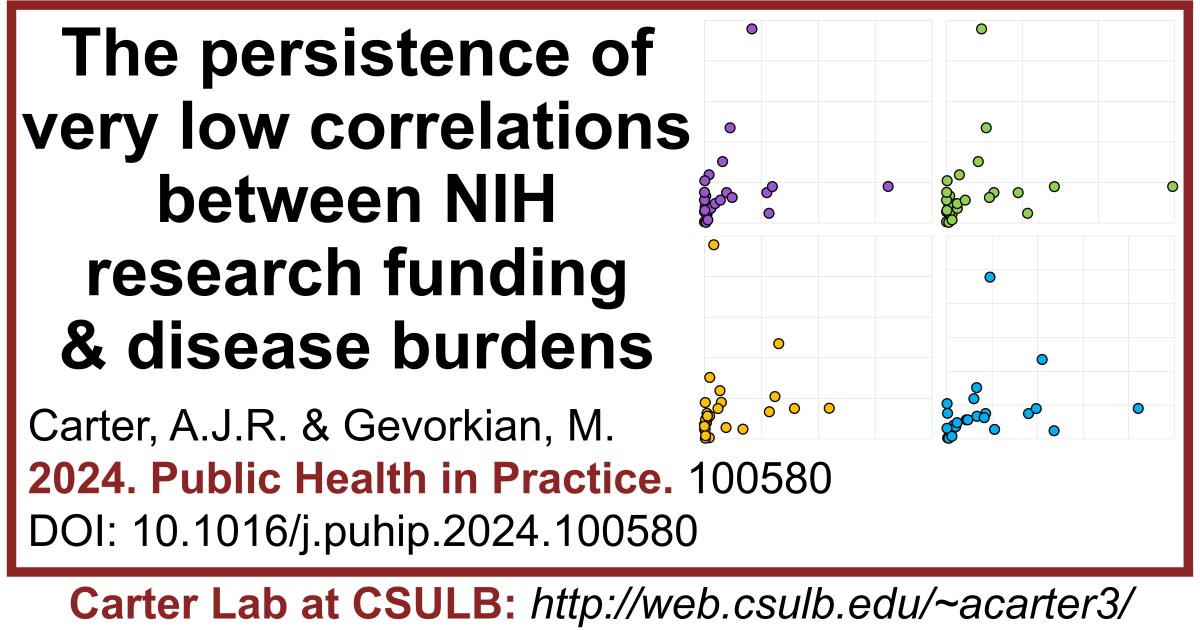ABSTRACT:
Objectives: The degree to which the allocation of disease-specific research funding by the NIH is proportional to disease burden is an important question. This study examined the historical relationship between NIH funding allocation and disease burden for a variety of medical conditions.
Study design: Coefficients of relatedness for the linear relationships between funding and disease burden for 27 medical conditions over a period exceeding twenty years were calculated.
Methods: Publicly available data from 2009 to 2019, and previously published data from 1994 to 2004, was obtained to compare disease-specific research funding from the NIH to burden of disease values (mortality, prevalence, incidence, DALYs, and YLLs) for 27 diseases.
Results: We identified very weak and declining correlations (e.g., R2 < 0.03) between funding and the five measures of burden for the 27 diseases. The weak relationships persist even when HIV/AIDS is omitted (e.g., R2 < 0.1). A recent decline in the overall strengths of the funding burden relationships is attributable to novel investment in Alzheimer's disease research.
Conclusions: The weak correlations reveal long-standing inefficiencies in the NIH disease funding allocation process. The recent increased and focused funding for Alzheimer's disease may not be justified by an objective analysis which considers disease burdens. Increased efficiency of medical research may be realized by improving the poor match between disease burden and funding allocation.
